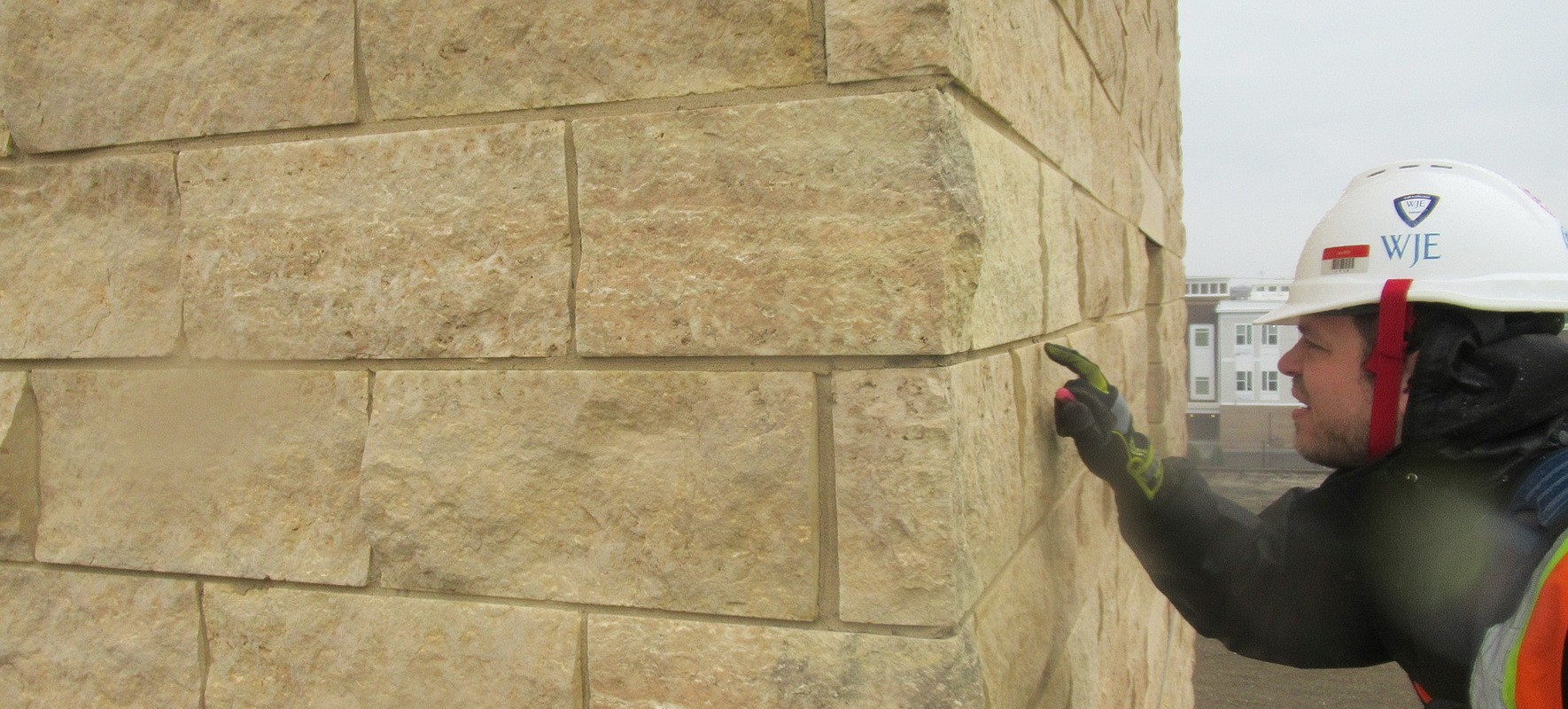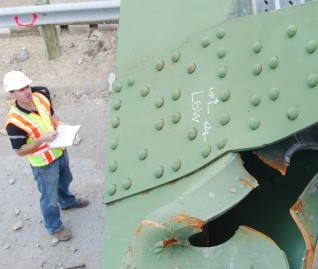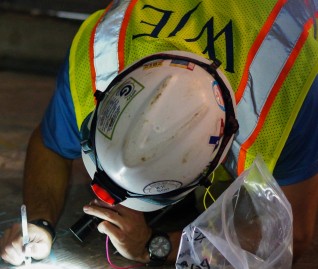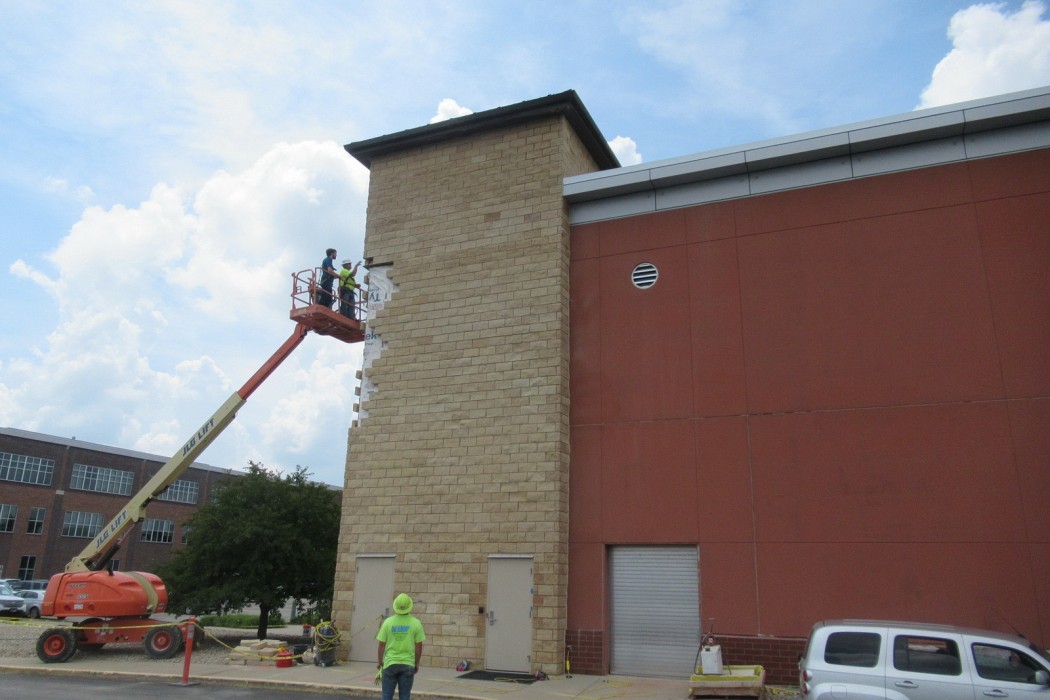WJE PROJECTS
St. Vincent Ruth Lilly Center


CLIENT |
Ascension Health |
LOCATION |
Indianapolis, IN |
Stone Displacement Investigation at Stair Tower
During the construction of the addition to the building, the general contractor observed displaced stone units at the southeast stair tower. Ascension Health engaged WJE’s services to investigate the cause of the displaced stone and develop repair recommendations.
BACKGROUND
The Ruth Lilly Center consists of the original building that was completed in 1999 and an addition that was completed in 2018. A forty-foot-tall stair tower exists in the 1999 portion of the building and is constructed with structural steel framing with a metal roof atop the tower. The stair tower is clad in a natural stone cladding and measures approximately fifteen feet in the north-south direction and eighteen feet in the east-west direction.
SOLUTION
To investigate the cause of the displaced stone, WJE performed a site visit to survey the pattern of displacement and observe the investigative openings in the wall made by the general contractor. WJE also reviewed the original design documents to correlate observations with the intended design.
Based on WJE’s observations, the displaced stone masonry was likely related to thermal- and moisture-related expansion and contraction of the stone cladding in two different directions at a corner. Based on WJE’s document review, the expansion joints to accommodate expansion and contraction of the stone cladding were included in the original design documents; however, there was no evidence that the expansion joints were ever constructed in the wall.
WJE recommended removal and reinstallation of the displaced stone; installation of expansion joints through the thickness of the stone at locations consistent with the original drawings; and installation of anchors within eight inches of the corner, where rebuilt. In addition, WJE recommended repointing deteriorated and cracked mortar joints with a mortar compatible with the existing stone.
RELATED INFORMATION
-
 Our professionals deliver practical repair and rehabilitation services that maximize the... MORE >Services | Repair and Rehabilitation
Our professionals deliver practical repair and rehabilitation services that maximize the... MORE >Services | Repair and Rehabilitation -
 When the integrity or condition of a structure is in question, clients rely on us for answers MORE >Services | Structural Engineering
When the integrity or condition of a structure is in question, clients rely on us for answers MORE >Services | Structural Engineering -
 Clients rely on our experience and laboratory capabilities to develop innovative solutions to... MORE >Services | Materials Engineering
Clients rely on our experience and laboratory capabilities to develop innovative solutions to... MORE >Services | Materials Engineering





































